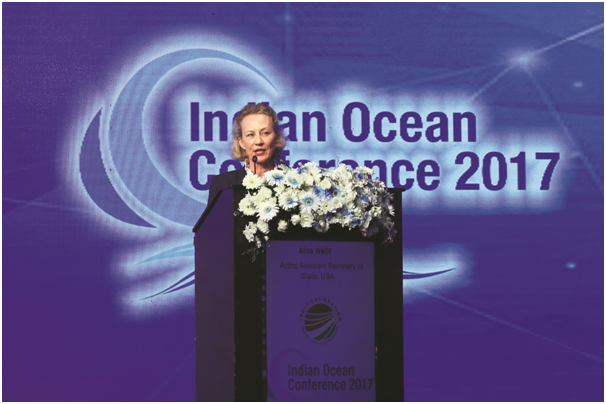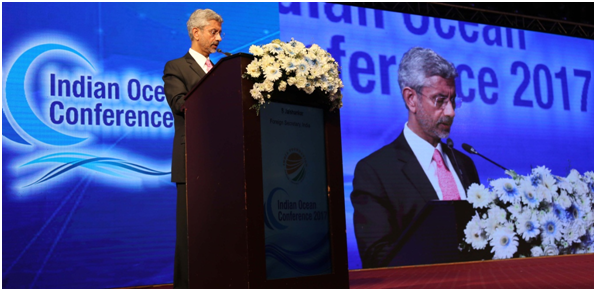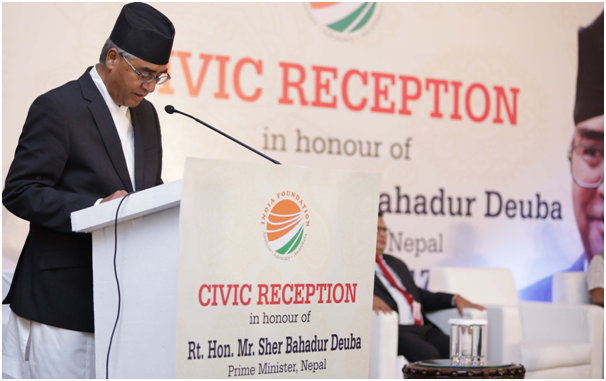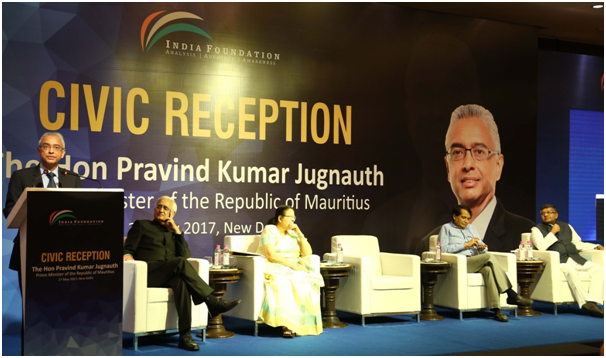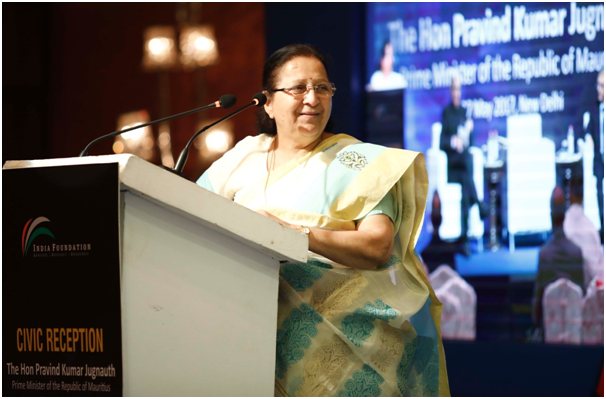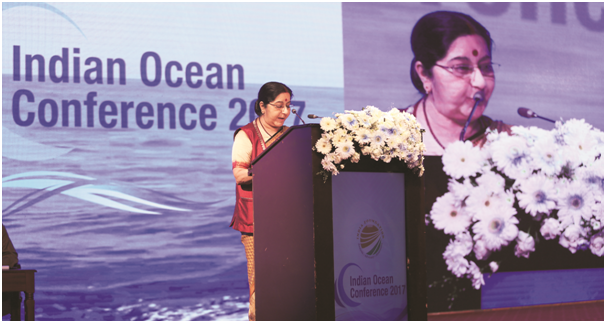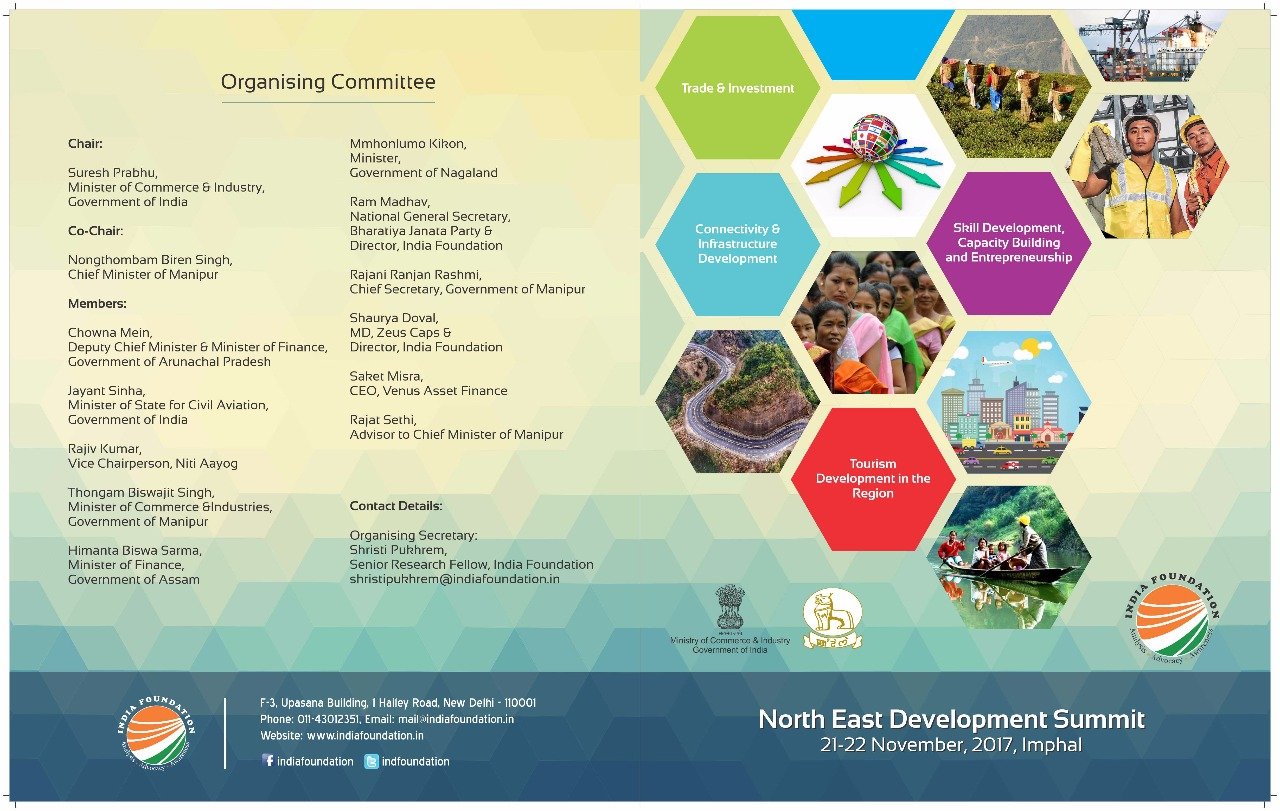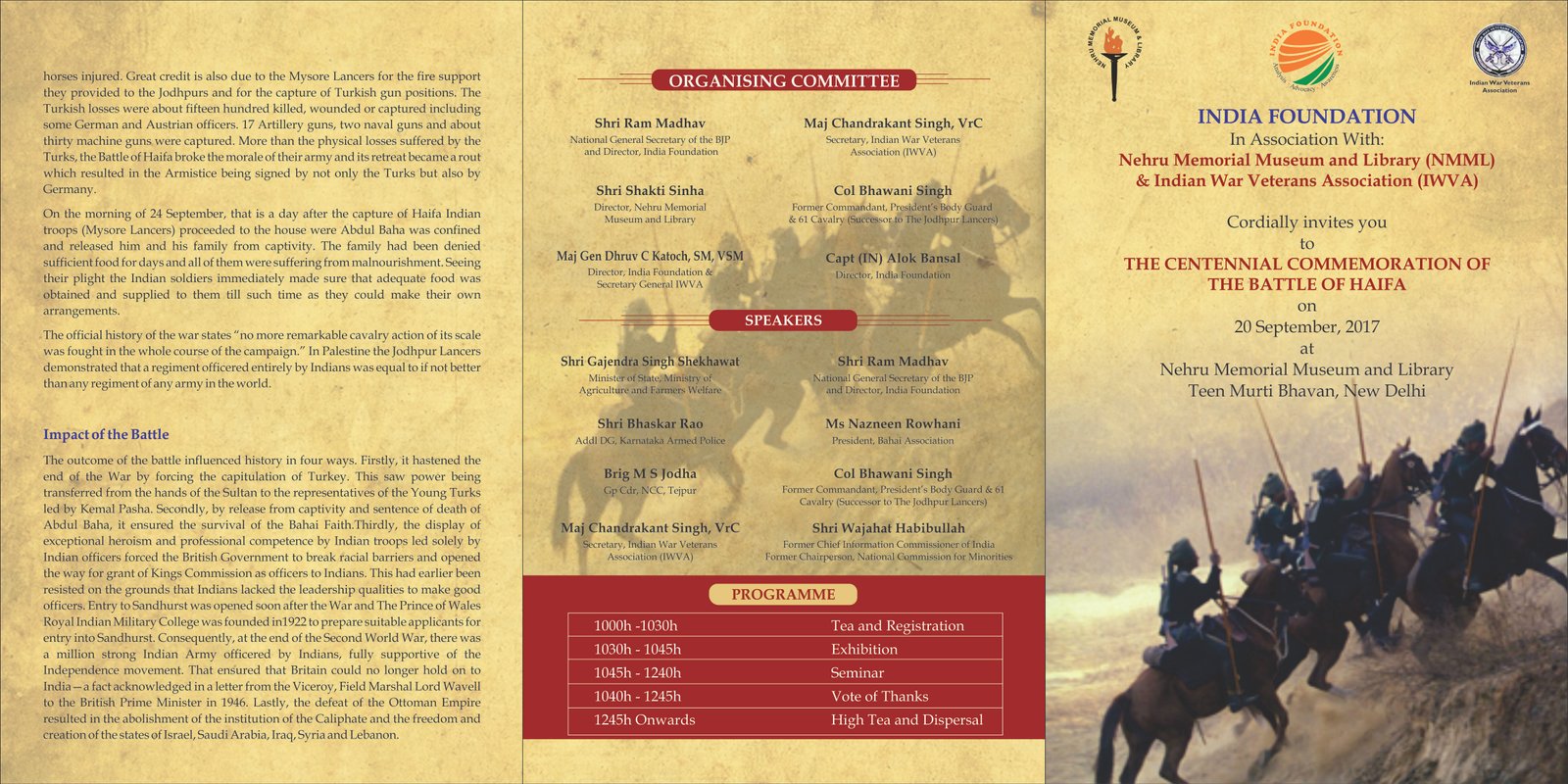Since the time we became independent about seven decades ago, the Indian state has evolved into a successful institution. The whole evolution of this statecraft – in the form of states, our political establishment, managing the diverse demographies – all this has a very solid foundation. That foundation is the ancient nationhood of this nation. The reason to evolve into a successful democracy is not because we have adopted any great theory in 1947 and that theory has brought us to a situation where well blossomed democratic institutions flourish in this country today. In fact we had a very solid national foundation in this country and over that this institution has flowered into a successful one.
The biggest challenge before our leadership at the time of independence was to integrate multiple political entities that existed at that time in the form of princely states. But the Indian experience was different from the experiences elsewhere like in USA or the former USSR. The journey of Unites States of America as a nation began in 1776 when they first created one state called USA when 13 British Colonies decided to come together and formed into one nation. That journey is yet to conclude. There are still serious fault lines and raging debates on the national identity of USA. Texas joined in United States in 1845. Whether it joined conditionally or fully is a debate that rages to this day. There are people in Texas and elsewhere who say Texas reserved the right to secede from America anytime it feels its interests are not protected. There was a case in California wherein it was argued if Texas had that right why not California. When Obama got reelected to the presidentship in America, several online petitions were set off by people who believed that it was an insult to America’s so-called racist identity. And some of the petitions received considerably high support to the tune of 100 thousand signatories and 75 thousand signatories. Their whole argument was that it was a defeat of their identity and therefore they should secede from America. USSR, which was formed in 1922, could not live beyond 70 years.
In 1947, when we got independence, British provinces naturally formed part of independent India. We needed to use several tactics to bring all the princely states into the Indian Union and to make them accept the paramountacy of Indian Union. Nehru had to issue threats, Patel had to be more diplomatic, and Rajagopalachari had to be logical. Of all the top leaders, it was Rajagopalachari, who had the most profound argument at that time. He simply said, Indian paramountacy is not based on any agreement, it is based on a fact. In USA it was based on agreement, in case of USSR, it was by force. Whereas here in India, it was neither force nor agreement, but a fact. That we are a paramount sovereign entity is a fact. Rajagopalachari had to emphasize on that part.
The important fact is that barring some four important princely states – Hyderabad, Junagad, Bhopal, Jammu and Kashmir – largely the princely states of India, were not inimical to the idea of accepting Indian paramountacy and joining Indian Union. They only wanted some concessions. Looking at the experience of the other nations, it seemed to be such an easy thing that it happened in three months time. It all began in May 1947 and ended by the time we became independent in August 1947. In three months, except for about four, all other princely states agreed to join Indian Union.
We began the building of Indian state on a rather solid foundation. In the system we have adopted, we have shared the powers between Union and the States. Seventh Schedule of the Constitution deals with the Union List, State List and the Concurrent List. I belong to a school of thought, which always believed, we should have a strong union. Because India being such a large country, with so much diversity, in order for it to be kept intact, united, in order to ward off any threats to its sovereign entity, we needed to have a strong Union, a strong central government. But the experience shows, there is nothing to be feared.
The devolution of powers further down the units has happened as a process in the last seven decades. We speak of giving powers to the local panchayats. Unfortunately, States are very greedy and they do not want further delegation of powers to the panchayats. When we brought in Panchayat Raj, all that we did was to give money directly to panchayats and not powers. Today power still remains with district collector, then of course with the secretariat at the state capital. We are advocates of further strong devolution of powers to local panchayats. We must allow them to handle their own affairs. How many cowsheds they should have need not be decided in Hyderabad or Patna. That should be decided in their village. The local bodies must be given more powers. Today financial devolution has happened. But this has happened as a process. Having closely watched it, I sincerely feel that as long as we keep the foundation of one common national identity based on civilisational and historical experience strong in this country, you can do any number of experiments with Indian state craft.
As part of my political duty, I deal with states that are remote from Delhi. Remoteness causes problems in States like Nagaland, Manipur, Arunachal Pradesh, etc. Many efforts were made not just to hit at the state, but to hit at the nationhood of this country. But they have not succeeded. Any number of attempts to wean the people away from the foundation, have not succeeded in these states.
Finally those who wanted to challenge the sovereignty also, had to come down to the view, sovereignty is one and that is Indian sovereignty. Under that, one can demand the moon. This is the experience of the last seven decades. The lesson here is, rather than worrying too much about what will happen to this country if we devolve more powers to the states down the line, do not worry about it as long as you have enough institutions in place to keep your national consciousness intact.
National consciousness can be built around several things, even on things like insecurity. You can create a narrative of insecurity and try to keep national identity as one. That is how Pakistan does. For them to keep their nation one and intact, only thing is to show that there is a neighbor on their eastern side which would destroy them. That keeps them as one. Economic interests keep 51 entities of United States as one entity. Whereas in case of India, it is the civilisational and cultural oneness of this nation that keeps it intact. Once this foundation is intact and solid, you can do any number of experiments in statecraft.
One need not worry about the rise of regional parties in India. They espouse regional interests. India is a vast country with distances and distances matter. Somebody sitting in Chennai, may think his interests are different from the interests of somebody sitting in Delhi. He might develop his own political narrative based on those interests. Let us not deride it as regionalism. In our country regional politics took centre stage for a period of about two decades between transmission from Congress dominated politics to the BJP dominated.
Initially, the dominant force in this country was Congress Party, for a very natural reason that Congress had essentially tried to take entire credit for independence movement to themselves. They said we were the people who got independence to this country. In fact, Congress was just a platform to right from Hindu Mahasabhite to a non-Muslim league Muslim party member, or Krishak Praja Party member. It was a platform for Maulana Abul Kalam Azad and Madan Mohan Malviya together. Congress was a platform to even people like Dr. Hedgewar and Savarkar. The founder of RSS Dr. Hedgewar, actually participated in Congress led independence movement. Not only was Congress a political party, it was a united platform for all the Indians to fight against the British rule.
Ideally, Congress should have listened to Gandhiji. On 27th January 1948, three days before his unfortunate death, Gandhiji dictated to his Secretary, a new constitution for the Congress wherein he stated, “Congress having achieved its objective of independence although truncated, should abandon the form of a political entity and become Lok Sevak Sangh.” But Congress leaders at that time wanted to make Congress into a party and sell the idea that they were the people who brought freedom to this country. Naturally, because Congress movement was such a powerful movement, people have so much faith in it, people supported Congress as a political party also.
First two decades of the narrative in post-independent India was Congress centered because there was no scope for alternative political narrative. By seventies, the alternative narratives came up. The only alternative narrative available then was the left narrative, the communist narrative, which did not suit the genius of this land. It never grew substantially in this country except in some universities and in some states. After the political narrative remaining dominated by Congress for the first two decades, then came the effort of all the smaller parties joining hands to take on the Congress. That led to a phase of coalitions at centre and number of states. That is in seventies and eighties. Then gradually the other alternative national narrative in the form of BJP has grown in strength. By mid nineties the second alternative narrative, is in place.
Some said it was communalism verses secularism and that Congress represented secular forces and BJP represented communal forces. The narrative used to be that, but that was not true. There is a narrative that Congress was representing. There was alternative narrative BJP has come up with. And the real politics of these two opposite narratives began some time in nineties, which you witness to this day. In this competition of two different narratives, now BJP has got the upper hand.
The phase today is where the BJP’s narrative, narrative of national oneness, its own narrative of secularism is the dominant narrative in the country. It doesn’t mean all the others are going to be washed away. BJP formed a government in Assam. It had around 30% popular vote and Congress had around 31%. In first past the post system, it is not necessary that ruling party or alliance must have more votes, but it should have more seats. In Manipur, Congress had only 35% popular vote, BJP had 36.5%. Congress got 28 seats, but BJP had only 21 seats. Genuine multi party democracy has evolved in this country where regional parties also had a good place. The dominant narrative today is a narrative of hope and aspiration.
Parties today are struggling to come up with a coherent narrative to attract and get the support of the people. We have entered into a phase of politics of hope and aspiration. If one is seen as somebody who can deliver, is capable, people are with him. It is no longer based on regionalism or caste. Caste as an institution has not yet disappeared. But there is a bigger narrative today. In last state elections in Bihar and UP, there were two different verdicts. Yet, one common feature in both the verdicts is, that the verdicts were based on that one narrative of hope and aspiration, not on caste, not on any regional sentiment, not on any other extraneous factor.
The Bahubalis, the goondas, the criminals find it increasingly difficult in electoral arena. It is a remarkable change that has happened in our political system. Indian state has evolved and Indian electorate has largely matured. Prior to independence, people like Mahatma Gandhi used to have skepticism about bringing democratic model of government in India. Literacy rate in India at that time was just 17%, today it is above 80%. His concern and fear used to be, for a country with such a low literacy rate, if you give them democracy, it could become mobocracy. Mobocracy meaning, somebody who can mislead a mob, mobs whether they are in Kashmir or Kanyakumari, they are mostly misled. Somebody can mislead them. This used to be the fear. But one need not have that fear anymore.
The advent of social media has transformed political discourse in this country. An educated young man can challenge a mighty powerful MLA publically. A politician, when he speaks, need to be careful. One tweet can damage his political discourse. Today’s politics is very challenging and it is good for the country. Regionalism, casteism, communalism are no more dominant narratives. Many have a weakness of interpreting election results to suit their own thinking. Some had jumped to the conclusion that the UP result was because of communal polarization. But in fact, UP’s result was an outcome of the politics of hope and aspiration. The youth, irrespective of their religion, caste, had deserted their traditional political parties to vote for a leader or a party which they believed, represents their hope. So, we should not misread into this situation, misinterpret it. Writing on the wall today is, a politician has to be a responsible politician. He has to be capable, able to deliver. That gives hope that Indian democracy has evolved.
Even in recent past, there were TV debates whether we should have presidential form of government or continue to have parliamentary form of government as we practiced in last seven decades. Bur it would hardly matter for this country now as there is an evolved and matured electorate, and main stream media and social media can check political activism and ensure that one can no longer take people for a ride. As long as we have these institutions intact, forms hardly matter. Every form has its good and bad. If tomorrow all Indians decide to migrate to presidential form of democracy, there will be a change. We will still have our MPs to elect. We will still have our parliament. But one thing will happen. In a presidential form, it would be very difficult for Gujrals and Deva Gowdas to become Prime Ministers.
The challenge for us today is to keep the national foundation intact. No effort should be made to weaken the fabric of this nation. When there is a discourse on Kashmir, it cannot be to weaken the national foundation of this country. Do not weaken that, but over that foundation, let hundred types of politics flourish. Let there be moon as a demand, let sky be the limit. But the basis is Indian nationhood, which is defined by Indian constitution.
* This article is a summary of the inaugural address delivered by Shri Ram Madhav,
National General Secretary of BJP and Director of India Foundation at the national conference on
State Politics in India and launch of the book with the same title organized by
Nehru Memorial Museum and Library at New Delhi on 17th May, 2017.
(This article is carried in the print edition of November-December 2017 issue of India Foundation Journal.)

